
Crystar Review
Sometimes it’s difficult to talk about a game that truly disappointed you. How do you begin talking about a game that had a promising start, but only seemed to worsen over time, while properly conveying the experience you had? It doesn’t feel great to be negative from the get-go when I wasn't expecting to be, but perhaps that is the appropriate course of action; to just get things out of the way. As such, I have to start by saying that as much as I wanted to like Crystar, it’s far from a good game.
Crystar is an action JRPG that revolves around, unsurprisingly, crying. Rei Hatada, the main protagonist, is dragged along with her sister Mirai to Purgatory, a place where the souls of the dead wander until they reach the Cogs of Renewal that reincarnates them without their memories of who they were in previous lives. Some souls, however, still can’t let go and turn into Revenants, who aim to obtain Revival (which essentially erases the fact that they ever died) by absorbing other souls. During an attack from a Revenant, Rei awakens the power of a Guardian (basically a Persona, from the homonymous series) but she loses control and ends up killing Mirai in the process.
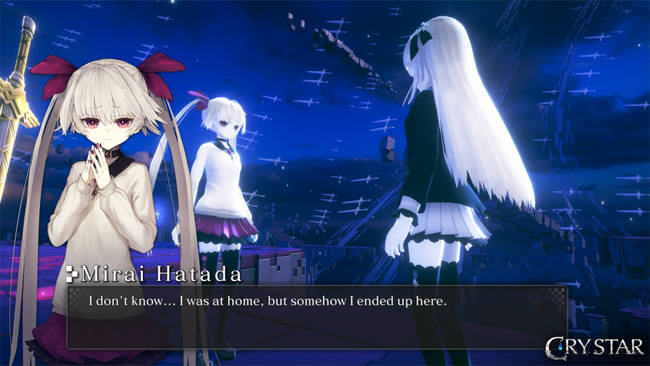
The setup was interesting enough, and so were some of the developments that followed. In what maybe was not the brightest idea ever, Rei immediately signs a deal with the twin demons Mephis and Pheles that rule Purgatory, who offer her the chance to grant Revival to Mirai in exchange of hunting down Revenants and gathering 'Idea', crystallized tears that are necessary for Revival. As she fights to accomplish her goal, Rei meets three more party members who each sign a contract with the demons for their own reasons.
The gameplay itself is nothing to write home about. You have a light attack, a heavy attack, a jump button and a dash as your basic moves. Each character has a different style of weapon that works best for different ranges and they also have unique abilities that work like spells, of which you can pick four at a time and consume SP to use. Your SP refills by hitting enemies so you’re always encouraged to use skills. You can also summon your Guardian to help you in battle by filling the Tear Gauge either with the dedicated cry button or by also hitting enemies. Once in the field, your Guardian essentially doubles your own attacks and you can also unleash an ultimate attack that automatically puts your Guardian away.
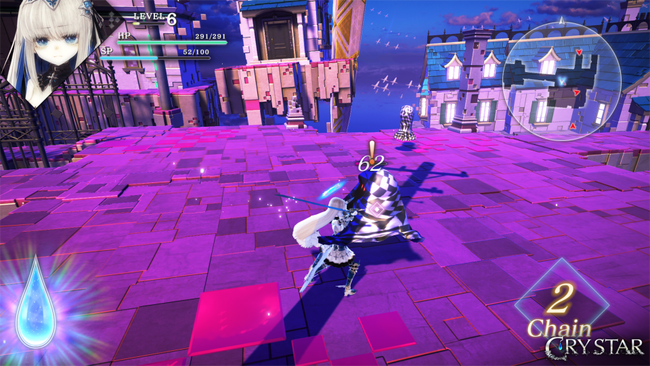
To gather Idea and prevent Mirai from reaching the Cogs of Renewal, Rei must traverse many dungeons named Ordeals. The structures of these Ordeals is fairly simple. Each Ordeal has basically three small dungeons of three floors each, and at the end of every Ordeal there is a boss fight. In the dungeons themselves, you fight a small variety of enemies and every now and then a Revenant, which is essentially a regular enemy that hits harder and has more health. For every Revenant you defeat, you gain an item called a Torment that represents the final thoughts of the soul defeated and that you can purify in your bedroom by crying, which turns them into equipment.
You will spend a decent amount of time in your bedroom. Besides purifying Torments, this is also where you can find the Glossary, that explains every term and proper noun the characters throw at you, and the Memoirs of the Dead, which are small and not very interesting descriptions of the Revenants you defeat. Also, you can pet Rei’s dog. It doesn’t seem to do anything in terms of gameplay, but it does say that it warms Rei’s heart, so that’s good. In your bedroom, you can also fuse equipment together to improve its stats, listen to the game music, change costumes and more.
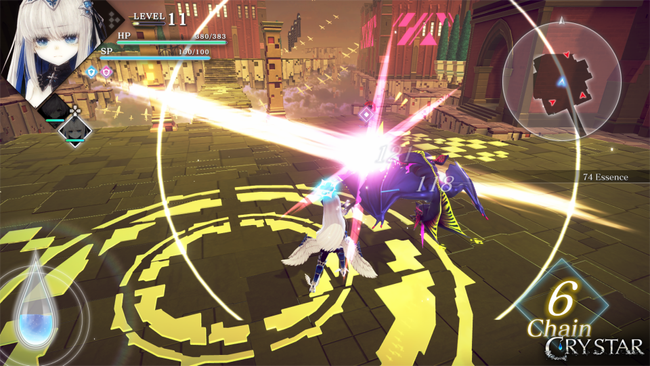
When described like the above, nothing seems to be particularly wrong with Crystar. And during the first few hours, it truly felt like that. It wasn’t exactly a stellar game, just mindless fun. The combat is very stiff, with some enemy types and most bosses not reacting in the slightest when strikes land, and many of the protagonists’ battle animations being long and unyielding. The writing wasn’t especially good, with the most representative example I can think of being a flashback of Rei’s mom telling Rei during her 5th birthday that she was supposed to have a twin sister but she, and I quote, “passed away inside Mama’s belly”, and that’s why they looked for a dog that shared birthday with Rei. The English voice acting, while serviceable, also didn’t do the writing any favors, with only the main characters showcasing good performances in spite of no one being able to pronounce names like Mirai correctly.
And yet, I was having some fun, at first. The music was nice enough, and so was the artstyle. The rapport between the characters was entertaining even if they weren’t getting any real development. However, the game began to overstay its welcome after 10 or so hours, where the plot became more predictable and it was clear that none of the characters would actually receive any meaningful depth. Still, it continued to be mindless fun as I made it to what the game called the final dungeon. And then, Crystar went off the rails.
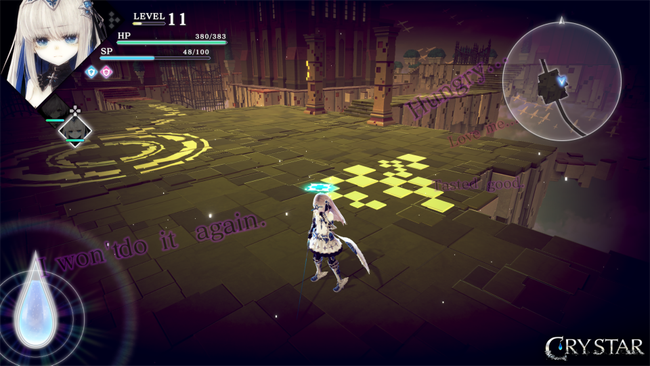
When I defeated what the game made me believe was the final boss, I got a completely inconclusive scene, after which I was immediately dumped back at the beginning of the game, without credits nor any indication of what was going on. Once I replayed the first moments of the game, one new, extra scene played and the story jumped forward to the middle point of the previous run. That started what could maybe be considered the second half of Crystar: where you replay the last couple of dungeons for ten more hours, with a slightly different - yet entirely predictable - storyline.
I was fine with Crystar being a short (by RPG standards), flawed, but entertaining game. But the game's larger structure is really a test of patience. Those last few dungeons were already one of the weaker elements of the game because of how long they are. None of the dungeons have anything going on other than combat, and when the combat feels this basic, it’s simply not fun to stretch the game’s combat segments. The added time isn’t even used to properly develop its characters, and instead falls back to the problem the rest of the game had, which confuses reacting to events for proper depth. You don’t really get to know who these characters are, you’re supposed to have a connection with them due to the terrible circumstances they go through. And, what’s worse, any attempt at emotional scenes is undermined by the limited animations in cutscenes, even if some present very interesting illustrations with an art style that goes well with the rest of the game.
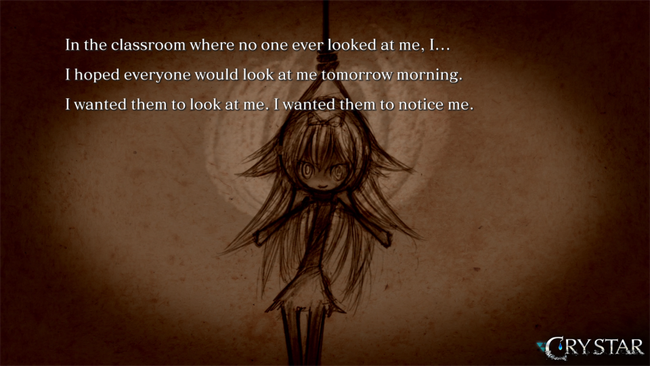
This last point starts feeling especially poor during the last stretch of the game, because it comes off as somewhat mean-spirited due to how it handles its themes. At its core, Crystar wants to be about overcoming hardships and finding happiness within the sad moments. However, its execution leaves a lot to be desired. Even with ten more hours of story tacked on, the game fails to make its characters feel like more than just victims of circumstance while dropping serious themes like suicide, depression and even miscarriages without the levity they need to not come off as nothing more than tools to advance the story. It might not be its intent to be mean, but it ends up feeling like that just for the sake of having an emotional hook.
I was ready to be done with Crystar after its first 15 hours and leave somewhat satisfied, but the last chunk of the game really soured the rest of the experience. I was willing to give a pass to the stiff combat and the average writing precisely because it was building up to be a tighter, more entertaining experience. However, by artificially extending the length of a game that didn’t even make good use of its extra time, Crystar’s faults end up being impossible to tolerate and very easy to loathe. I really wanted to like Crystar, but I guess I couldn’t find much light in its darkness.